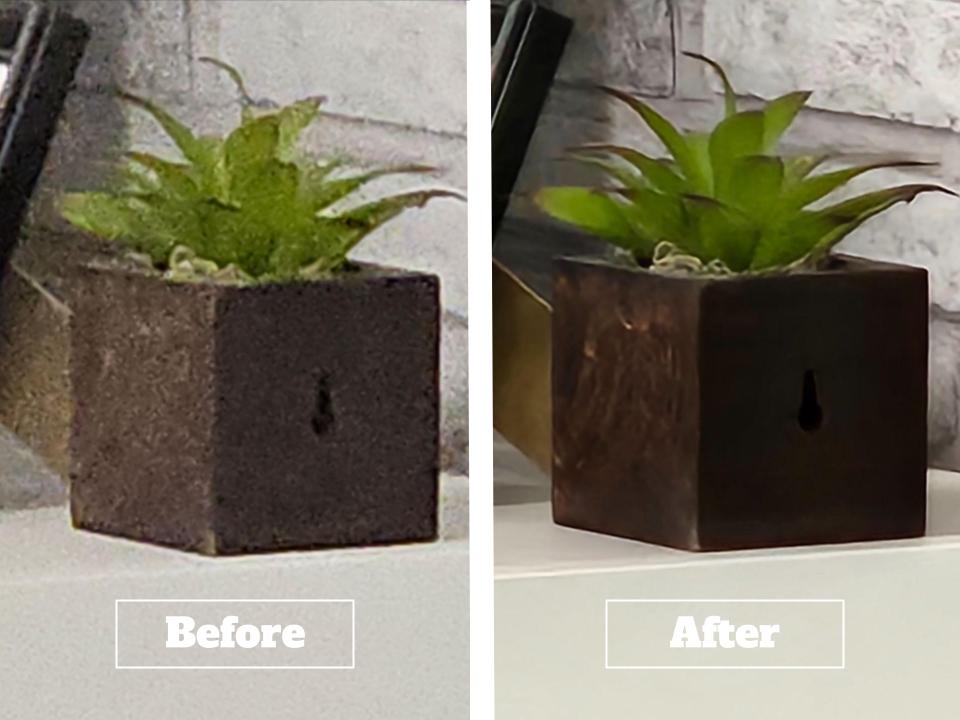Back in 1826, the first photograph ever was taken by Joseph Nicéphore Niépce that consisted of Niépce looking out his window and capturing a moment that would push modern photography technology to what it is today.
Technology has since moved on, tremendously so. Soon enough, artificial intelligence may make pictures unoriginal: in other words, genuine photography will be unrecognizable from AI (artificial intelligence).
Recently, Samsung and Huaweii have come under fire for being exposed to alter images taken of the moon with Samsung phones with the “100x” zoom and recent Huawei phones. A Reddit post online by a user ibreakphotos found out that purposely taking a blurry image of the moon on a computer would make the AI on Samsung and Huawei cameras over-edit the image to make it look like a super clear – like a close-up picture of the moon. The AI in Huawei cameras was found to layer other close-up images from the moon on top of the picture taken to clear up the image and over-sharpen and effectively create a realistic yet fake image of the moon. These images would come out with such high detail in the craters of the moon and the area surrounding the moon even though the moon was purposely made blurry.
Although it was only recently this issue was tested, Samsung and Huawei have implemented bits and parts of enhanced scene photography and detail in previous phone generations dating back to 2019 and earlier.
“Creating a single image out of multiple exposures is at the heart of computational photography. But, as ibreakphotos proved, there’s more going on here. Samsung’s Fake Moon Photo Controversy shows that some of the user’s testing was pretty smart. A photo of the moon was blurred, and displayed at a distance, putting a hard ceiling on how much detail would be possible to capture, regardless of the quality of the camera’s optics,” Wired reporter Andrew Williams said.
According to Williams, Samsung’s Galaxy S23 Ultra can produce images that still give the “impression of having much more detail than the source image being captured. The effect in their sample images is dramatic.”
Content creator Marques Brownlee brought this issue of pre-edited photography up in his video, which goes much more in-depth about the specifics of what is behind the image processing. Brownlee spoke about how big companies such as Samsung and Huawei have progressed their software to a point that details that may not be visible at all in the first place will become visible with AI enhancement. In essence, AI can add minute detail to an image without the user realizing it. The AI edits an image to what the user will likely change it to or fixes the image if certain details are missing from an object.
The moon, for instance, is a very recognizable thing that many users with Samsung phones with the “100x” zoom feature will photograph. Basically, there is no chance they will take the exact same image as another person who tries to capture that scene. The moon image itself will not change (perhaps if it were blue or red on certain occasions), but it will take the picture as is, with all the AI enhancement behind it.
Functionally, all images taken on most phones nowadays are already modified by AI to make them more appealing, editing them with a scene optimizer.
“Each of these technical tricks, whether you call them AI or not, was designed to do what would have been impossible with the raw basics of a phone camera. The furor over this moon issue is understandable. Samsung uses lunar imagery to hype its 100x camera mode and the images are, to an extent, synthesized. But it has really just poked a toe outside the ever-expanding Overton AI window here, which has directed phone photography innovation for the past decade” Williams said.
This topic has forced people to question the authenticity of other photographs they have previously taken and consider if some – or most – are altered or overly enhanced by AI. Technology constantly improves, so it is only a matter of time as to when AI will fully take over the picture-taking experience. Smartphones process the object or scenery the moment the camera is opened and once a picture is taken, it’s already been edited.
At the rate technology is moving, AI might completely overtake photography and blur the lines between real pictures, and overly edit one-take shots. Fortunately enough, certain phones do allow the removal of AI features, and as long as companies continue to implement this option pictures will not be altered. Options need to be given to people and their phones in order to keep the originality and realism of pictures.



